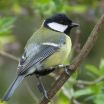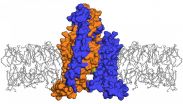(Press-News.org) As the two foolish pigs learned before running to their brother's solidly built house of bricks for safety, when the wolf comes calling, the quality of your shelter is everything.
Animals in the wild have always instinctively known this. But changes to their habitat in the wake of human encroachment, climate change and a variety of environmental influences are affecting the predator-prey relationship and creating new "fearscapes" dotted with predation risks.
To better understand what's happening, researchers are using innovative imaging techniques to map the properties of vegetation that influence how and when animals use cover from the elements and predators. Their data could help dictate land management decisions and restoration of the landscape.
Backed by several National Science Foundation grants, with additional university funding, the project is lead by Boise State University alumnus and current Washington State University graduate student Peter Olsoy, along with Boise State faculty Jennifer Forbey and Nancy Glenn and graduate student Jordan Nobler; Janet Rachlow from University of Idaho; and Lisa Shipley from Washington State.
Their findings are published in BioScience, the journal of the American Institute of Biological Sciences, in an article titled "Fearscapes: Mapping Functional Properties of Cover for Prey with Terrestrial LiDAR."
Mapping the functional elements of vegetation -- those that provide concealment, for instance -- purely from ground level can be tricky. Such measures are location specific and tend to provide limited data. So the team used ground measurements combined with terrestrial laser scanning to create a more richly detailed fearscape map.
Researchers used LiDAR to capture detailed images. Using remote sensing, LiDAR targets an object with a laser, and then analyzes the reflected light to capture an image of the object's 3D structure.
"It essentially creates a map showing relative risk for an animal based on how well it can be hidden," Forbey said.
Using unmanned aerial vehicles, the team gathered data from multiple vantage points, representing predator sightlines as well as the visibility of potential predators by prey. Information gathered could help researchers understand how habitat changes can impact the predator-prey relationship.
The report notes that many prey in Southwest Idaho (such as pygmy rabbits and sage-grouse) rely on sagebrush vegetation for refuge from predators like badgers and birds of prey. But the increase in invasive species is altering the landscape and affecting the ability of prey to find shelter.
Images captured by LiDAR are allowing researchers to compare the landscape from various eye-heights (coyote vs. weasel), positions (standing vs. lying) and modes of hunting (ground vs. air).
And once the data is collected, it can be manipulated to reflect changes in the environment or vegetation structure. How does the area look in summer vs. the dead of winter, when leaves are gone and cover is scarce? How does a heavy snowstorm change things? What if conditions lead to slow or accelerated growth of plants?
"That's the cool part of this," Forbey said. "We collect the data once and we can manipulate it forever."
Forbey said the project was conducted as a "proof of concept" model. Creating 3D images of habitats will allow for future research in the area of reproductive success of birds like sage-grouse that create visual displays to attract mates.
"We plan to use this technology to assess the most visible locations where male sage-grouse are likely to be seen by potential mates," she said. "We'll be able to assess the likelihood of mating success for males according to their location on the breeding ground."
INFORMATION:
DETROIT - A common prostate cancer therapy should not be used in men whose cancer has not spread beyond the prostate, according to a new study led by researchers at Henry Ford Hospital.
The findings are particularly important for men with longer life expectancies because the therapy exposes them to more adverse side effects, and it is associated with increased risk of death and deprives men of the opportunity for a cure by other methods.
The research study has been published online in European Urology.
The focus of the new study is androgen deprivation therapy (ADT), ...
Scientists have developed a novel treatment approach for persistent viral infections such as herpes. Using animal models of herpes simplex virus (HSV) infection, researchers show that blocking the activity of a host cell protein called LSD1 reduces HSV infection, shedding (release of viral particles) and recurrence. LSD1, which is essential for HSV's infectious cycle, modifies certain host proteins that control access to DNA. These modifications, known as "epigenetic" changes, help determine how and when genes are used. The collaborative effort, led by scientists at the ...
Kansas City, Mo. -- December 3, 2014 -- Results from more than 100 families with children affected by a broad range of neurologic and developmental disorders who underwent genomic testing to end their quest for a diagnosis, were published today in Science Translational Medicine. This is the first study to show that a genome-based diagnostic approach directly impacts patient care of both infants and older children with neurologic disorders. Forty-five percent of families received a diagnosis by exome or genome sequencing, fifty percent of those diagnosed had a change in ...
PULLMAN, Wash.--Washington State University researchers have found that it is counter-productive to kill wolves to keep them from preying on livestock. Shooting and trapping lead to more dead sheep and cattle the following year, not fewer.
Writing in the journal PLOS ONE, WSU wildlife biologist Rob Wielgus and data analyst Kaylie Peebles say that, for each wolf killed, the odds of more livestock depredations increase significantly.
The trend continues until 25 percent of the wolves in an area are killed. Ranchers and wildlife managers then see a "standing wave of livestock ...
Koala population distribution may be influenced by eucalyptus leaf toxin and nutrient content, especially in areas with low-quality food options, according to a study published December 3, 2014 in the open-access journal PLOS ONE by Eleanor Stalenberg from The Australian National University and colleagues.
Scientists suspect that access to nutritious food plays a role in herbivore distribution and abundance, but there is still some debate over how variation in plant nutritional qualities may influence population distribution. Koalas predominantly eat eucalyptus leaves ...
A population of humpback whales that resides in the Arabian Sea may have been isolated for ~70,000 years, according to a study published December 3, 2014 in the open-access journal PLOS ONE by Cristina Pomilla, Ana Rita Amaral, Howard Rosenbaum, and Tim Collins of the Wildlife Conservation Society, the American Museum of Natural History, and their colleagues.
The small, non-migratory population of Arabian Sea humpback whales is currently classified as "Endangered" on the IUCN Red List of Threatened Species. Scientists have limited data on the difficult-to-study population, ...
Aspects of the culture of research in UK higher education institutions (HEIs) can encourage poor research practices and hinder the production of high quality science, according to scientists who took part in a project exploring the ethical consequences of the culture of research led by the Nuffield Council on Bioethics.
The findings of the project, which included a survey of almost 1000 scientists and others, suggest that scientists are motivated in their work to find out more about the world and benefit society, and that they believe collaboration, multidisciplinarity, ...
Birds learn new foraging techniques by observing others in their social network, 'copycat' behaviour that can sustain foraging 'traditions' that last years, according to a study of how innovations spread and persist in wild great tits (Parus major).
The study involved experiments with eight local populations of great tits in Wytham Woods, Oxfordshire (UK). In five of the populations two male birds were trained to slide a puzzle box door either to the left or to the right. In three control groups two males were captured but not trained. The birds were then released back ...
Whether stubbing a toe or stroking a cat, the sensation of touch starts out as a mechanical force that is then transformed into an electrical signal conveying pain or other sensations. Tiny channels in neurons act as translators by helping to formulate that signal to the brain. However, scientists know little about the fine details of how these channels work.
New work at Rockefeller University has revealed that one such channel in humans responds to mechanical force using a never-before-seen mechanism. Researchers led by Roderick MacKinnon, John D. Rockefeller Jr. Professor ...
A team of biomedical engineers at Washington University in St. Louis, led by Lihong Wang, PhD, the Gene K. Beare Distinguished Professor of Biomedical Engineering, has developed the world's fastest receive-only 2-D camera, a device that can capture events up to 100 billion frames per second.
That's orders of magnitude faster than any current receive-only ultrafast imaging techniques, which are limited by on-chip storage and electronic readout speed to operations of about 10 million frames per second.
Using the Washington University technique, called compressed ultrafast ...



